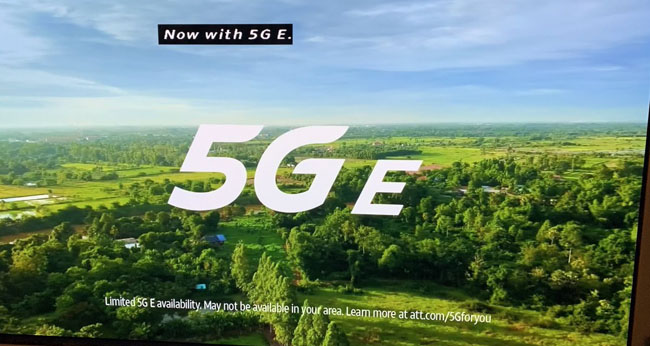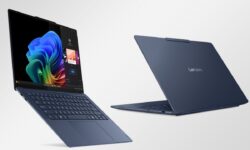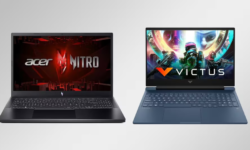The broadband industry loves bullshit names
You’ve heard of 5G; now meet 5G E, 5G TF, and 10G
Your internet provider thinks you’re dumb. Between fake “unlimited” plans, bogus fees, and simply not providing promised speeds, companies like Verizon, AT&T, Comcast, and Spectrum have been using questionable claims and branding to spin their customers for years. Now, as we approach an era of faster mobile and wired internet speeds, recent marketing antics show that this kind of insult to your intelligence is only going to get worse.
The latest salvo revolves around companies pretending to reach or beat 5G without actually offering 5G. There’s AT&T, which rebranded parts of its 4G LTE network as “5G E”; Verizon, which launched a home internet service using non-standard “5G TF”; and the cable industry, which is trying to top your wireless carrier with advertisements for a nonexistent service called “10G.”

All of these names are nonsense. They’re misleading marketing campaigns seemingly designed to rely on confusion around technology to get you to buy into next-gen tech that you’re not actually getting.
It’s no secret that these companies know what they’re doing. As AT&T’s wireless CEO put it last month while defending the 5G E branding, “Every company is guilty of building a narrative of how you want the world to work.” In other words, every company spins reality for marketing.
AT&T has gotten the most attention for its aggressive use of 5G E, but the cable industry more recently debuted perhaps the worst branding attempt of all: 10G. Cable groups are hailing it as the next big thing in wired broadband, with speeds that will one day increase tenfold on what we currently have, opening up new and fantastic avenues of technology that haven’t been possible without it. It’s supposed to sound better and faster than 5G, but the service essentially doesn’t exist.
The name on its own is misleading. Despite being twice as large as 5G, numerically speaking, 10G isn’t comparable. 5G refers to the fifth generation of mobile broadband technology, while 10G refers to 10-gigabit speeds, the promised data rate that cable companies hope to one day offer.
The 10G branding initiative is ostensibly meant to kickstart the journey of delivering those super-fast speeds. It was announced last month as a joint project from various cable industry groups, including the NCTA and Cable Europe, with support from Comcast, Charter, Cox, Rogers, Vodafone, and more.
In practice, it’s a meaningless marketing term based on a simple premise: 5G networks are promising speeds that could, for the first time, seriously threaten wired home broadband with the sort of ease of use and wide rollout that wired connections just wouldn’t be able to keep up with. If there’s anything the cable industry hates more than its customers, it’s competition.
The 10G initiative’s only reason for existing seems to be making the cable industry look like it’s topped 5G by putting a larger number in front of the G. In reality, cable companies already struggle to reliably provide far slower speeds, let alone anything close to a 10Gbps speed on a widespread consumer level. (Some local ISPs have managed it, but on an incredibly small scale.) The average median download speed for US broadband customers was just 72 Mbps near the end of 2017, or 0.72 percent of the promised 10Gpbs goal, according to the Federal Communications Commission’s latest broadband report.
10G may have been born out of fear of 5G, but even members of the wireless industry fear being beaten to 5G by their competitors, leading to fake 5G programs with equally fake names.
It should be no surprise that the worst of these branding stunts comes from AT&T, which is essentially pretending to have a nationwide 5G network. You couldn’t be blamed for assuming the “5G E” icon that’s started to appear in the corner of AT&T phones — including the iPhone — and as a logo at the end of some of AT&T’s recent ads means that the company has deployed a 5G network. It hasn’t.
Instead, AT&T has decided to brand recent LTE upgrades as “5G Evolution.” Worse, both T-Mobile and Verizon beat AT&T to deploying these LTE upgrades by months.
Even the 5G E name itself seems designed to be misheard, with the “G” in “5G” already ending on an “E” sound. (I can already imagine the Abbott and Costello routine happening at my local AT&T store: “Is this a 5G phone?” “No, it’s a 5G E!”)
You may have also seen Verizon bragging about being the “first to 5G.” It’s not. The company essentially deployed a fake version of 5G just for bragging rights.
Verizon launched a “5G” home internet service back in October, but it uses a different take on 5G than the rest of the industry. Even Verizon doesn’t plan to use this version of 5G, known as 5G TF, for its mobile network. It’s actually going to use 5G NR, the agreed-upon standard.
Making all of this even more ridiculous, Verizon plans to physically replace existing 5G TF hardware (both on towers and for consumers) with standards-based 5G hardware down the line. Verizon won’t even expand its “5G” home service’s availability until that new hardware is ready, making it even more clear that the initial deployment was just for show.
For both AT&T and Verizon, the nonsense branding works by tapping into confusion around these new technologies. AT&T’s 5G E service does, in fact, use technologies that will benefit 5G early on since 5G will initially be built on top of LTE. And Verizon’s 5G TF service is using many of the same technologies that go into 5G NR. But ultimately, the two companies are blurring the lines against a globally agreed-upon standard, and what they’re using isn’t it. 5G E is still just LTE, and 5G TF isn’t compatible with the rest of the 5G world.




